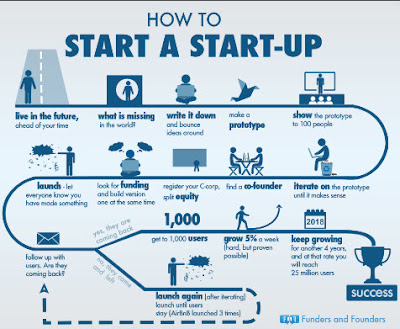Click on the image to enlarge
Coaching
for innovation requires following three major steps in the process, using a
conceptual framework, we developed with Geary Rummler, Dale Brethower and Roger
Kaufman between 2007 and 2008 during our work together at the first PhD and MBA
program on societal performance at the Performance Improvement Institute first
rollout, at the Sonora Institute of Technolgy, ITSON.
The PII program moved the traditional management and performance improvement practice from the "geriatrics" of re engineering and management interventions designed to help revitalize and redesign large, established organizations at the Fortune 100 level to the challenges of the "pediatrics" of creating new organizations at the early stages of business, technological and social innovation.
Business "pediatricians" must deal with unborn and newborn, unstable, messy young organizations and act fast in "do-or-die" interventions. Like pediatricians dealing with parents, business pediatricians must deal with entrepreneurs that are -at best- unprofessional managers with a deep emotional attachment to their "children". All of which makes specially important to work with a different coaching and consulting model.
Our model combines the frameworks of (a) new business creation steps -shown in the diagram below-
and (b) the stages of psycho social development as defined by Erik Eriksson in his Psychosocial Development Model
The result was a model that follows three main stages: (1) planning (2) incubation and (3) acceleration:
Click on the image to enlargeEach stage has specific tasks and challenges for coaches and managers.
Table 2: The “Four Seasons” of Business Creation
Business
development stage
|
Main
achievements & goals
|
Conflicts
|
MFP
Most
Frequent Pitfalls
|
How coaches
can help
|
1. “Seed” organization
|
·
Viable
business plan
·
Sound
business case
·
Attract
“the right mix” of
o
Financial
o
Intellectual
o
Human
capital
|
·
Rationality
vs. passion
·
Vision
vs. balance
·
Ownership
vs. organiza-tion
|
·
“One-eyed”
business case
·
Poor/wrong
staff selection
·
Lack
of manage-ment skills & model
|
·
Develop
a sound and balanced business plan and business case
·
Vetting
staff selection
·
Coaching
for strengths
|
2. Startup
(“Toddler” ) organization
|
·
Business startup
·
Sound and scalable organization
·
Creating a nurturing business ecosystem and placing the
toddler company in it
|
·
Quick growth (sales, ROI) vs. strategic fundamentals (value
proposition, client, market)
·
Talent vs. trust
|
·
Lack of internal & external feedback &
participation
·
Unsustainable, harmful growth
·
Excessive stockholder’s intervention
|
·
Establishing feedback “early & often”
·
Look at Mega (Kaufman,
Oakley-Browne, Watkins, & Leigh, 2003)
·
Create & manage a “three rings” circus
|
3. “Adolescent” organization
|
·
Establishing
a self-regulating organization
·
Establishing
independent identity
·
Efficient
management
·
Field-tested
product or service
|
·
Business
view vs. people view vs. organization view
·
Management
system in place
·
“Owner”
vs. “management” hat
·
“Fades”
vs. solutions
|
·
Adopting
“big business” solutions & fades
·
“Blame
storming” and “firing” through crises
·
“Loyalists”
vs. “innovators”
|
·
Working
things out of the box (workouts)
·
Establishing
learning moments, events, learning organization
·
Use
incubators, “spinoffs” as “organizational
labs”
|
4. “Graduated” organization
|
·
Self-sustainable business
o
Stable client base
o
Social and conventional ROI
·
Working capital (IPO)
|
·
Intuition vs. organization
·
Business view vs. system view
·
“Hold” vs. “Expand” (or sell)
|
·
Shunning alliances and synergies
·
Failing to establish win-win, strategic partnership with
clients
|
·
Work the four views (Rummler,
2004)
·
Focus on strategic market positioning, alliances.
|
References




No comments:
Post a Comment